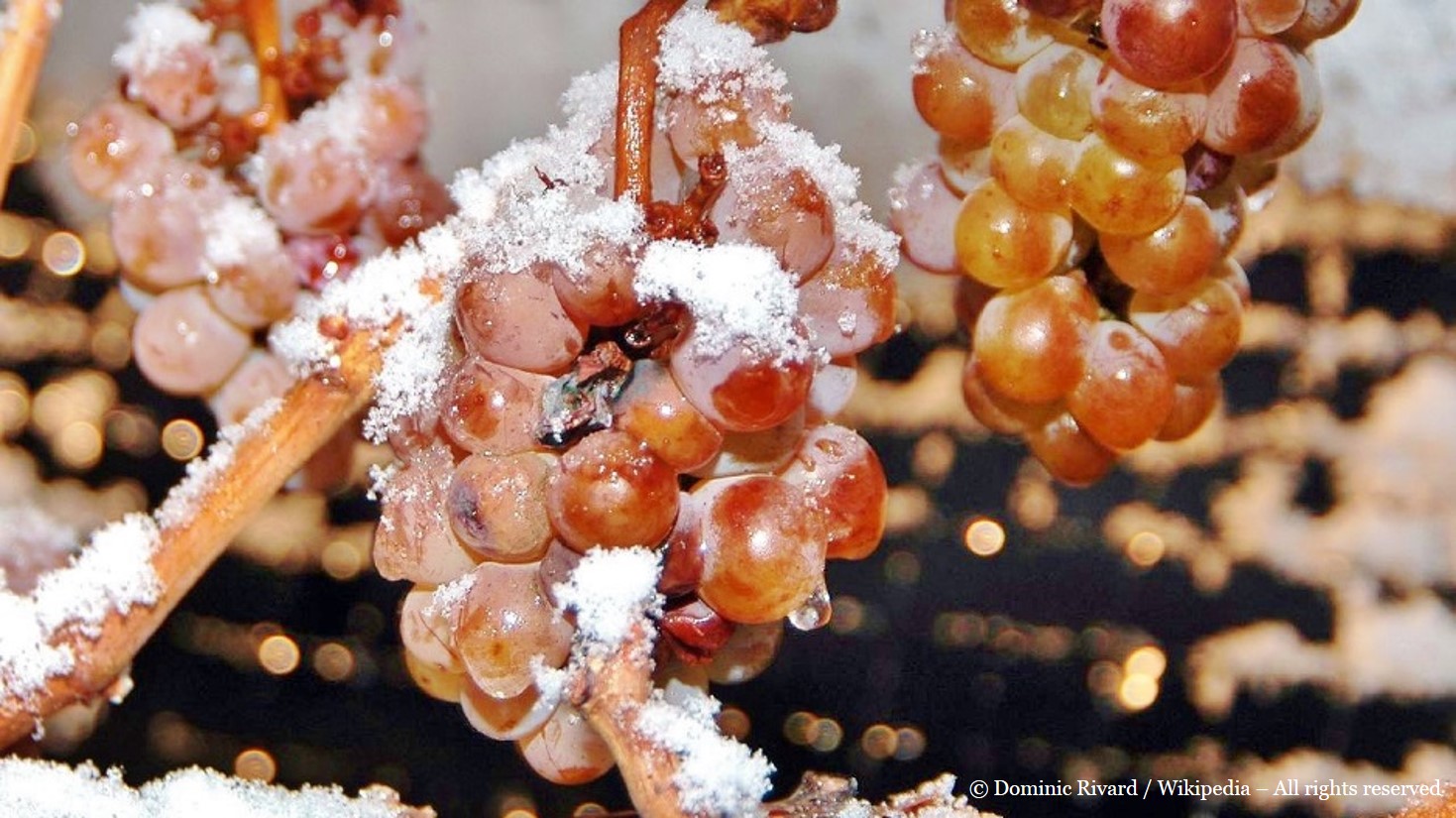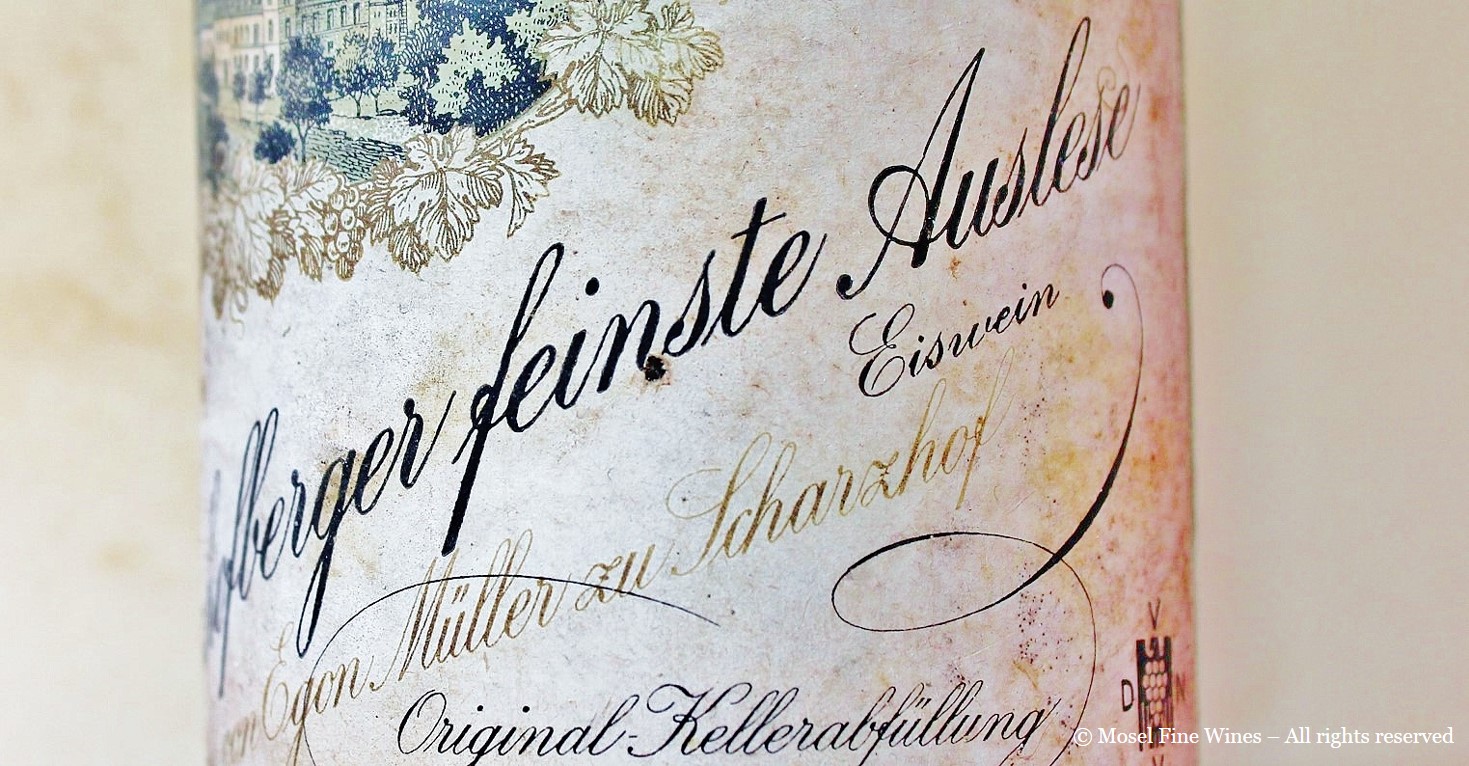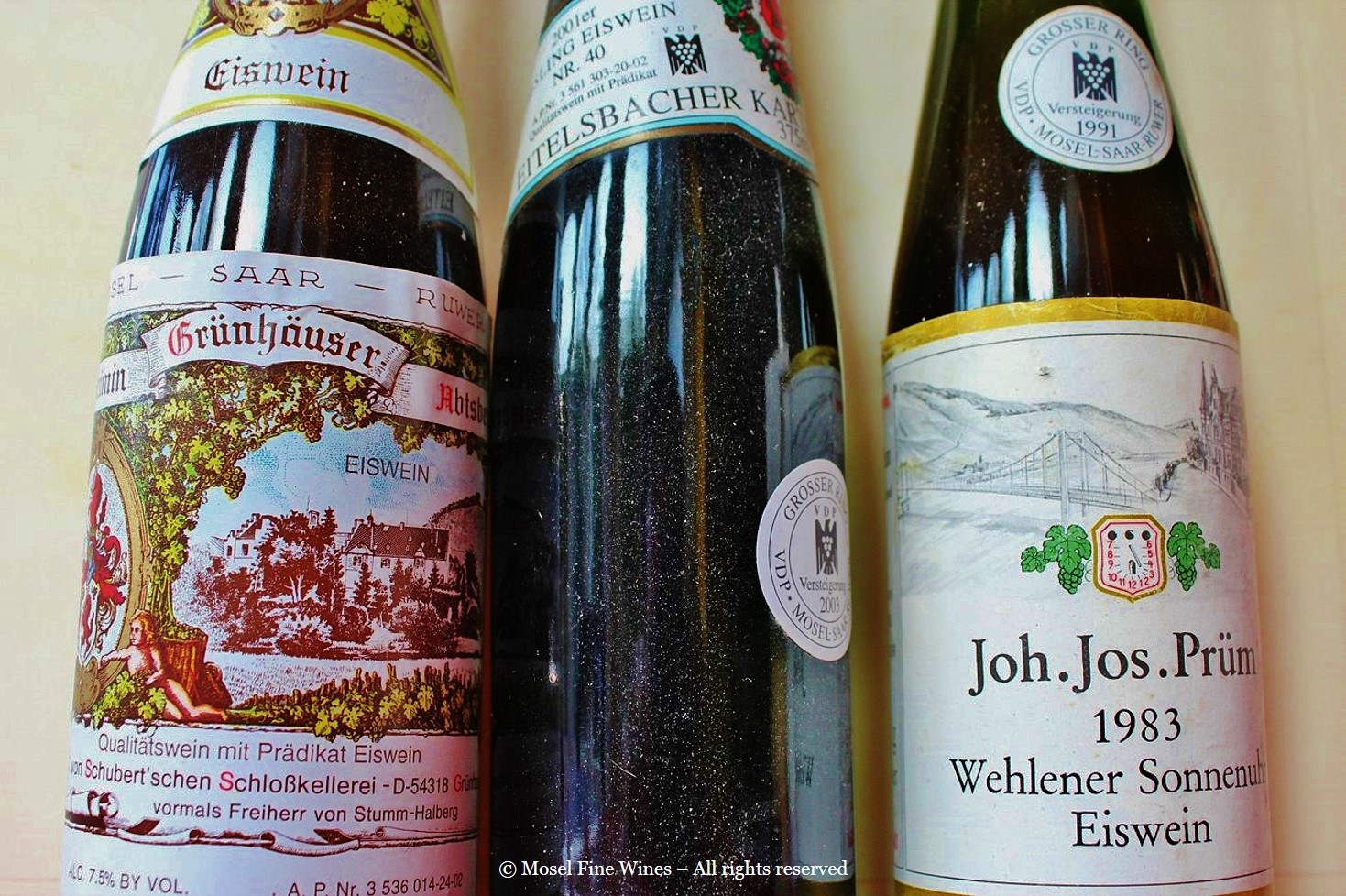February 19, 2015 | News | Wines

A look-back at this frozen pleasure on its 175th birthday and how it has not always been the sweet dessert wine we know today.

On February 11, 1830, the wine growers from a little village near Bingen decided to harvest their (frozen) grapes, making this the oldest record of an Eiswein harvest anywhere in the world. But why is this so special?
When grapes freeze, part of the water in the juice freezes. The sugar and acids are not affected. When pressing these grapes very cold, part of the water is stuck as ice. But the juice still contains the original amount of sugar and acid levels. As a result, their concentration has increased.
Until well into the 1980s, only very few vintages in the Mosel and Germany delivered grapes with naturally high sugar levels. The saying was very clear: “A decade has 1-2 good vintages, 2-3 fair ones and the rest is best forgotten.”
This was also the case in the vintage 1829, which proved a very poor vintage. The grapes were still on the vines in February 1830. The story goes that the wine growers decided to harvest these to feed their livestock. Probably much to their surprise, the resulting juice proved sweet and enjoyable.
Historically, Eiswein was a winemaking technique used to increase the sugar levels of any harvest in a natural way. The name Eiswein was used in conjunction with a Prädikat. There were Eiswein Naturrein, Kabinett Eiswein, Spätlese Eiswein, etc. There were even TBA Eiswein produced (notably by the Egon Müller Estate in 1973)! All well-known winemakers produced some Spätlese or Auslese in lesser vintages this way. There was even some feinste Auslese Eiswein, as seen on the label below.

It is only in 1981 that the public authorities decided to make Eiswein a separate Prädikat level. They stipulated that Eiswein must have the sugar levels of at least a Beerenauslese. From then on, it has been exclusively a dessert wine.
This is why Eiswein bottles from after the 1981 vintage only have the word Eiswein on the label (without any additional Prädikat). These Eiswein are produced in tiny quantities and are very expensive. However, if you see say a 1975er Spätlese Eiswein somewhere in a sale, this is going to be a Spätlese with a racier acidity than normal.

Whether done as in the old days or the modern dessert wine, Eiswein can be a very special moment of wine drinking: It concentrates all the aromatics, enhances the fruits and gives a sorbet-like structure and feel to the aromatics. It is therefore not surprising that many of the leading Estates regularly risk some good grapes in hope of an elusive period of frost, ideally not too late (so that the grapes are still healthy). Of course, they also take these risks because these rare gems are expensive!
© Text by Mosel Fine Wines "The Independent Review of Mosel Riesling ... and beyond!"
Disclaimer: Mosel Fine Wines is an independent publication and has no commercial relationship with any Estate, association or organization featured in this article.